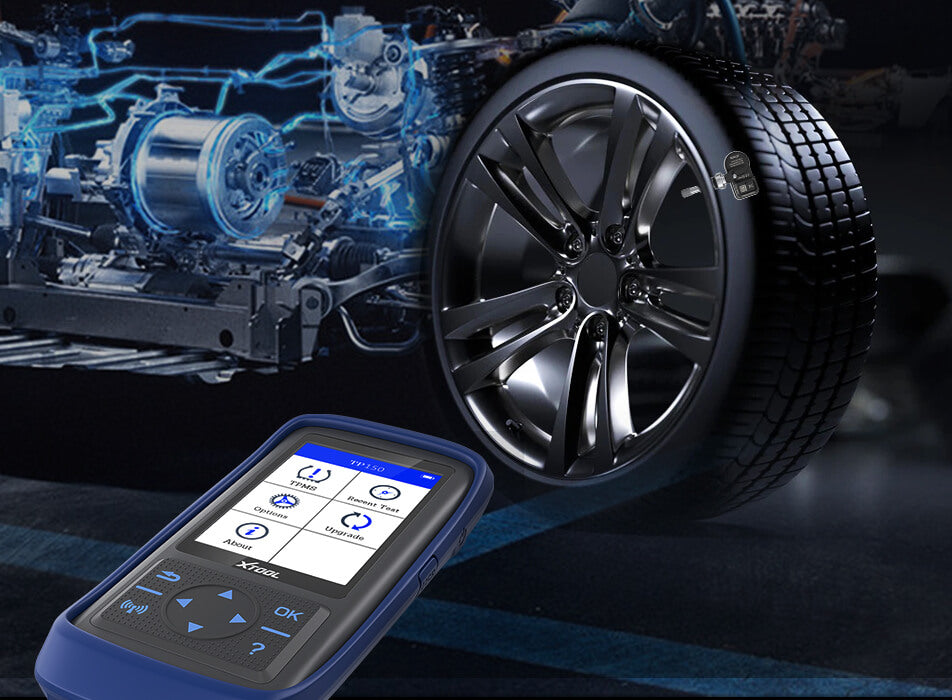Introduction
When that little TPMS light flashes on your dashboard, it’s easy to brush it off and think, “It’s just the tires.” But in reality, it’s your car’s way of warning you that something could be wrong with one of the most important safety features — your tires. The Tire Pressure Monitoring System (TPMS) isn’t just a modern convenience; it’s a safeguard designed to prevent blowouts, poor fuel economy, and premature tire wear.
In this guide, we’ll explore what a flashing TPMS light really means, why it happens, and how you can fix or reset it — whether you’re a professional technician or someone who enjoys working on cars at home.
What Is the TPMS Light?
The Tire Pressure Monitoring System (TPMS) constantly checks the air pressure in your tires and alerts you if any tire is over- or under-inflated. It’s a critical system for safe driving and optimal performance.
When the TPMS light comes on, it means the system has detected an issue. Sometimes it’s as simple as a low tire, but a flashing light often means something deeper — such as a failing sensor or a system malfunction.
Solid vs. Flashing TPMS Light
-
Solid Light: One or more tires are under-inflated. Inflate them to the manufacturer’s recommended pressure.
-
Flashing Light: Indicates a communication or sensor problem within the TPMS system. It needs diagnosis rather than just inflation.
Why the TPMS Light Flashes
A flashing TPMS light doesn’t always mean you’re in danger, but it does mean something isn’t working properly. Here are the most common causes:
-
Low Tire Pressure: The most frequent reason. Even small leaks or cold weather can trigger the warning.
-
Sensor Battery Failure: TPMS sensors run on tiny internal batteries that can wear out after several years.
-
System Malfunction: Software glitches or wiring faults in the TPMS module can cause communication errors.
-
Wheel or Tire Change: Installing new wheels without properly programming the sensors can confuse the system.
-
Temperature Changes: Cold mornings can lower tire pressure enough to trigger the light temporarily.
Why You Shouldn’t Ignore It
Driving with a flashing TPMS light might not seem like a big deal — until it becomes one. Ignoring the warning can lead to:
-
Uneven Tire Wear: Under-inflated tires wear out faster on the edges.
-
Reduced Fuel Efficiency: Low pressure increases rolling resistance, costing you more at the pump.
-
Safety Risks: Poor traction and potential blowouts can cause accidents.
In short, the TPMS light is not just about comfort — it’s about safety and efficiency.
How to Reset the TPMS Light
Resetting your TPMS light depends on the vehicle make and the issue causing it. But before you reset anything, always fix the root problem first.
Step-by-Step Reset Guide
-
Check Tire Pressure: Use a reliable gauge to measure all four tires and compare them to the manufacturer’s recommended PSI.
-
Inflate or Adjust: Inflate any low tires and make sure all are at equal, correct pressure.
-
Drive to Relearn: In many cars, driving for 10–20 minutes above 15 mph allows the system to recalibrate automatically.
-
Use the Reset Button: Some vehicles have a TPMS reset button — often beneath the steering wheel. Hold it until the light blinks, then release.
-
Disconnect the Battery (If Needed): As a last resort, disconnecting and reconnecting the car battery may clear the TPMS error.
If the light still flashes, it may indicate a sensor issue that needs professional diagnostics.
When to Seek Professional Help
If you’ve checked the air pressure and reset the system but the light won’t stay off, it’s time to look deeper.
A professional mechanic can:
-
Test individual TPMS sensors
-
Check for module communication issues
-
Reprogram or replace faulty sensors
Before heading to the shop, you can perform your own diagnostic using professional-grade TPMS tools — the same type many technicians rely on.
Recommended Tools for TPMS Diagnosis
1. XTOOL TP150 — The DIY Mechanic’s TPMS Solution
The XTOOL TP150 is a compact yet powerful scan tool made specifically for TPMS systems. It’s perfect for anyone who wants dealership-level capability without the high price tag.
Key Features:
-
Reads real-time TPMS data: sensor ID, pressure, temperature, battery level, and frequency
-
Activates and relearns TPMS sensors quickly
-
Programs XTOOL TS100 sensors for easy replacements
-
Reads and clears TPMS-related DTCs (diagnostic trouble codes)
-
Supports almost all 315/433MHz sensors on the market
With the TP150, you can reset sensors, diagnose issues, and program new ones from your own garage — saving both time and money.
2. XTOOL InPlus IP819TP — The Advanced All-System Diagnostic Tool
For professionals and advanced users, the XTOOL InPlus IP819TP goes far beyond TPMS. It combines advanced diagnostics with TPMS programming, making it ideal for busy shops and experienced enthusiasts.
Highlights:
-
Programs and activates 99% of all TPMS sensors
-
Performs 36+ special functions (ABS bleeding, oil reset, key programming, and more)
-
Offers full-system diagnostics for engine, SRS, transmission, and ABS
-
Includes bi-directional control for active component testing
-
Supports online ECU coding for VW, Audi, and Skoda
-
Equipped with a 7” touchscreen and modern Android interface
In short, the IP819TP is not just a TPMS tool — it’s a complete automotive diagnostic system designed for professional-level precision.
Preventing Future TPMS Warnings
A little maintenance goes a long way toward keeping that TPMS light off for good:
-
Check tire pressure monthly, especially before long trips.
-
Account for seasonal changes — pressure drops in cold weather.
-
Inspect your tires regularly for punctures, leaks, or uneven wear.
-
Maintain your sensors — replace them or their batteries every few years if needed.
Final Thoughts
A flashing TPMS light doesn’t have to ruin your day. Most of the time, it’s a simple fix — but having the right tool makes all the difference.
Whether you’re a DIY car owner or a professional technician, tools like the XTOOL TP150 and XTOOL IP819TP give you full control over your TPMS system. They help you identify real problems, perform resets, and ensure your tires are always in safe condition.
Keeping your TPMS system healthy means driving safer, saving fuel, and extending the life of your tires — mile after mile.

